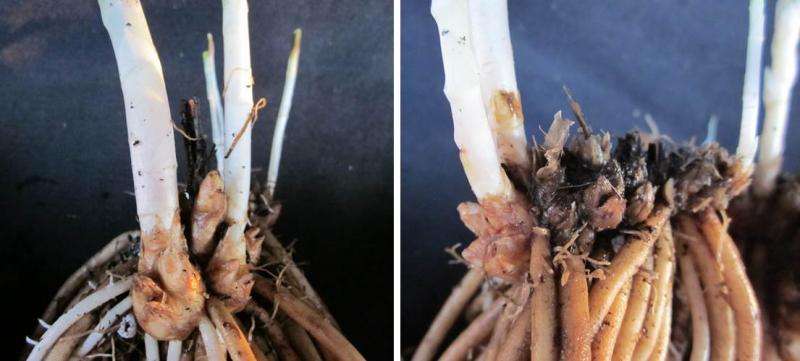Asparagus freezing tolerance related to rhizome traits

Certain cultivars of plants, while growing healthily in their original climates, can suffer from low sustainability when introduced to differing climatic zones. A recent study published in the Journal of the American Society for Horticulture Science analyzed three cultivars of asparagus (Asparagus officinalis), showing that winterhardiness may be directly related to varying levels of water or metabolites within the rhizome of plants.
The three cultivars, 'UC 157', 'Jersey Giant', and 'Guelph Millennium', bred in California, New Jersey, and southern Ontario, respectively, were all tested for their ability to withstand the cold temperatures of southern Ontario for 2 years. Ultimately, 'UC 157' was found to be the least adaptable due to high crown water percentage and low levels of certain rhizome metabolites, with 'Jersey Giant' proving to be intermediate, and 'Guelph Millennium' being the most tolerant.
To test the three cultivars, seedlings of each were established in the greenhouse, once in March 2011, and again in March 2012, and subsequently transplanted to a field in Simcoe, Ontario, Canada. Samples from storage roots and rhizomes of each cultivar were taken on four different dates during spring of each subsequent year and analyzed for water percentage and metabolite levels. Freezing tolerance was also measured directly with whole crowns.
As the ground experienced changes in temperature during the spring thawing period, the cultivars went through deacclimation and reacclimation periods. "Freezing tolerance during deacclimation was most associated with rhizome traits," explained authors David J. Wolyn and Mahmoud Panjtandoust.
The results showed that 'UC 157' had higher water percentage than 'Guelph Millennium' on all sampling dates. Freezing tolerance was strongly correlated to water percentage within the three cultivars, as well as the levels of other metabolites within the rhizome, suggesting that this organ is the most important for predicting adaptation to different climates.
"Overall, the data suggested that the timing of deacclimation and loss of freezing tolerance in the spring may significantly affect winterhardiness; cultivars that lose freezing tolerance early and cannot reacclimate could suffer most from late spring freeze-thaw cycles," the authors said.
More information: The complete study and abstract are available on the ASHS J. Amer. Soc. Hort. Sci. electronic journal web site: journal.ashspublications.org/c … nt/141/1/22.abstract
Provided by American Society for Horticultural Science

















